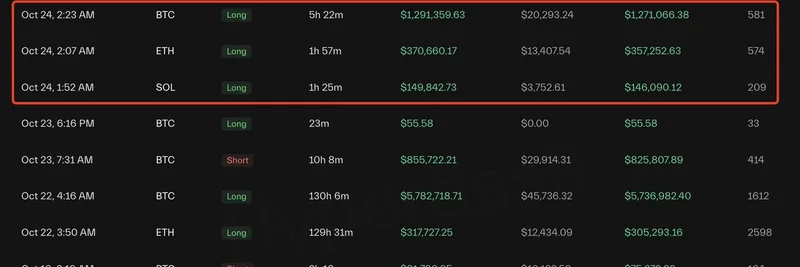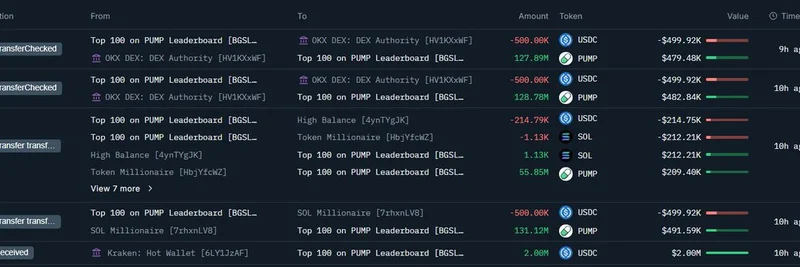If you've been trading meme tokens today, you might have noticed some hiccups—especially if you're on certain chains. A massive AWS outage hit the internet hard, taking down everything from Snapchat to banking apps, and yep, it spilled over into crypto. But here's the kicker: it exposed just how much of the "decentralized" web3 world still leans on centralized giants like Amazon Web Services.
The Spark: A Tweet That Hit Home
It all kicked off with a tweet from PixOnChain that summed up the chaos perfectly:
okay so
aws is down
half the l2s went with itonly one question we should have is:
who’s building the decentralized aws?
This post quickly racked up likes and replies, with folks in the crypto community nodding along. Layer 2s (L2s) are those scaling solutions built on top of blockchains like Ethereum to make transactions faster and cheaper—think Base, Optimism, or Arbitrum. Meme tokens thrive on these because low fees mean you can ape in and out without getting rekt by gas costs. But when AWS blinked, some of these L2s felt the pain.
What Actually Went Down?
AWS, Amazon's cloud computing arm, powers a ton of the internet. On October 20, 2025, a major outage started in the US East region, throttling services worldwide. Platforms like Coinbase reported users couldn't log in or trade, and Robinhood saw API delays affecting stocks and crypto alike.
In the blockchain space:
- Base (built by Coinbase on Ethereum): This L2 took a direct hit. Its sequencer—the part that bundles transactions and sends them to Ethereum—runs on AWS, leading to reduced throughput and stalled block production. With over $5 billion in total value locked (TVL), that's a lot of meme token liquidity temporarily frozen.
- Solana: Interestingly, this L1 chain (often compared to L2s for its speed) stayed rock solid. RPC provider Helius confirmed no core systems were affected, thanks to distributed validators across global setups, not tied to one cloud provider.
- Others like Arbitrum and Optimism: These held up better, leveraging multi-cloud strategies to avoid single points of failure.
For meme token enthusiasts, this meant trading on Base-grounded DEXes like Aerodrome or Uniswap forks ground to a halt, while Solana's Pump.fun and Raydium kept the party going. It's a stark reminder: your favorite cat or dog coin might be "decentralized," but if the chain's infra isn't, you're at the mercy of Big Tech outages.
Why This Matters for Meme Tokens
Meme tokens are all about hype, community, and lightning-fast moves. An outage like this doesn't just pause trading—it kills momentum. Imagine a fresh launch pumping, only for the chain to go dark. Traders miss exits, bots fail, and the vibe shifts from FOMO to frustration.
This event underscores a bigger issue in crypto: pseudo-decentralization. Many L2s use centralized sequencers or rely on cloud services for efficiency, trading true resilience for speed. For meme communities, which often bootstrap on these chains, building on more robust infra could mean fewer rugs from tech fails and more focus on the memes.
The Hunt for a Decentralized AWS
PixOnChain's question sparked a wave of suggestions in the replies. Who's stepping up to build a truly decentralized cloud? Here are some frontrunners already in the game:
Akash Network (AKT): A decentralized marketplace for cloud compute. Think Airbnb for servers—anyone can rent out unused GPU/CPU power. It's blockchain-agnostic and could power L2 nodes without relying on AWS.
Render Network (RNDR): Focused on GPU rendering for AI and graphics, but expanding into general compute. Perfect for meme projects needing heavy lifting, like generative art NFTs.
Filecoin (FIL): More storage than compute, but it's the OG decentralized alternative to Amazon S3. Meme token metadata and images could live here eternally, immune to outages.
IQ Labs: Mentioned in replies, this project's building multi-chain tools with a nod to decentralization—worth watching for meme-friendly features.
Other names like Arweave for permanent storage or even emerging players in DePIN (Decentralized Physical Infrastructure Networks) are gaining traction. These aren't just buzzwords; they're protocols where token holders incentivize a global network of providers, ensuring no single failure tanks the system.
If you're a blockchain practitioner dipping into memes, consider these for your next project. They could make your token more resilient, attracting degens who value uptime over hype alone.
Looking Ahead: Lessons for the Meme Insider Community
This AWS saga is a wake-up call. As meme tokens evolve from jokes to serious ecosystems, leaning on centralized crutches won't cut it. Communities should push builders toward DePIN solutions, ensuring the next bull run isn't derailed by a cloud hiccup.
Stay tuned to Meme Insider for more on how infra shakes up the meme meta. What's your take—did the outage hit your bags? Drop a comment below.



